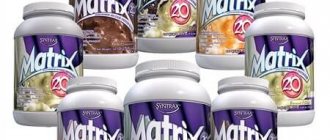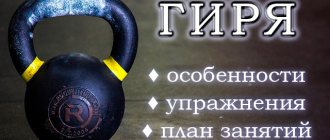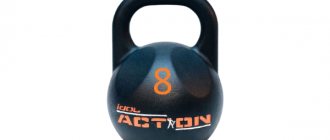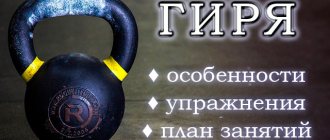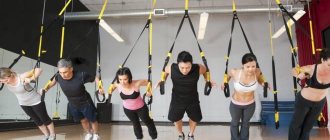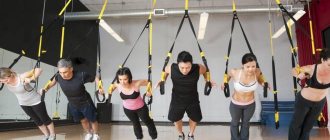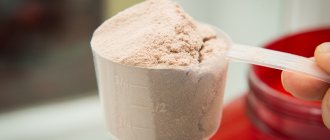home
High-precision weights belong to standardized equipment. The purpose of weights, their shape and classes are determined by GOST. Most manufacturing is about measurement. The science of metrology deals with the issues of standardization of measurements, which regulates the requirements for carrying out accurate measurements and the corresponding equipment.
We have known high-precision weights since school. Many people remember laboratory work in which scales with weights were used.
Tumbler weight USSR, what's inside?
Let's try to figure it out today. What does it consist of? What is its value? And for what reason are so many people willing to pay crazy amounts of money to purchase it? It's gotten to the point where weights are being stolen! So, happy owners of such, now beware of theft of not only your cash savings, but also be vigilant about weights!
Almost each of us has been familiar with this athletic equipment since childhood. They come in 16, 24 and 32 kilograms. In the post-war period, almost all factories of the Soviet Union launched their production, and every family had at least one of their options. Each weight had its own mark and had the function of a tumbler, that is, it had the ability to return to its original position from any position.
It is these tumbler weights that are in incredible demand among buyers. It’s hard to believe that they will use them for their intended purpose, since there are a great many advertisements with offers to buy them, and the sums offered for them are fabulous. Admit it, have you come across such messages with offers to buy “USSR” weights? I'm sure yes.
Do you think they really collect them? And here the main question flashes in the head, if people are willing to pay such large sums of money for them, then what is the tumbler actually made of? There were many versions on this topic - each of them more incredible than the other. It is worth noting that at the moment not a single assumption has been confirmed.
Types of weights
Weights are designed to reproduce and store a unit of mass with a standardized error. According to regulatory and technical documents, weights have the following accuracy classes: E1, E2, F1, F2, M1, M1-2, M2, M2-3, M3.
Weights of classes F1 and F2 are called high-precision. Weights of classes M1-3 are commercial weights.
Weights of accuracy classes E1 and E2 are called reference weights. E0 is a national standard kettlebell. Using these weights you can calibrate weights of other classes.
The rules that guide the manufacture of weights are set out in the International Recommendations OIML R-111-1–2009.
Assumptions
Some argue that the value lies in the fact that gold was used in their production. That is why they, having small parameters, weigh so much. Some assumptions go even further, and say that this gold is party gold, specially hidden in such an unsightly shell, with the aim of confiscating all the weights from the people if necessary. Well, who would suspect that there might be something valuable in the middle? Yes, such an assumption comes to mind with difficulty.
Platinum is another option for what the tumbler weight is made of. That is why the price for them is supposedly so high. But how much platinum can be in one such weight for its price to exceed tens of thousands of dollars?
Another purported value of the weights may lie in the precious material they contain, palladium. Whether this is true or false is extremely difficult to determine, since this will require special chemical tests. But some sources still contain information that the material from which weights were made in those days was a mixture of cast iron with a significant admixture of palladium.
Another guess as to what the projectile is made of is osmium. It has three times the density of metal. And supposedly the price for this material is $10,000 per 100 grams. Again, whether to believe this or not is your choice.
Errors of standard measuring instruments of the 1st category
Any standard means of measuring mass is used to verify other standard and working means of determining weight of a lower class. Weights and scales are a means of measurement, and weights of the 1st category are characterized by weights weighing up to one kilogram. Scales of the same category provide a weight of up to twenty kilograms. The confidence error in the mass of weights of the 1st category is up to 0.5 mg. The absolute measurement error on standard balances is up to 3.2 mg. In both cases, the confidence level by definition of accuracy is 0.95.
Scammers
Skeptics claim that there is no secret in the form of a magical component of the tumbler weight. And all this hype is an artificially created scheme by scammers. An unprecedented interest is created around an item for which an unrealistically large amount of money is offered.
The entire Internet is replete with similar, usually paid, texts. There are a lot of people who want to make money quickly and easily. Therefore, people who have taken the bait are already looking for those from whom they could buy these weights. Fraudsters raise prices for goods and at the same time sell those they once bought for big money to newly minted businessmen.
As a result, you buy a weight in order to make money on the difference, but you cannot sell it. The whole point is that this product ceases to be of interest to anyone. And it turns out that the acquired “USSR” weight actually does not represent any particular value. (But you and I know the real value of such weights, which were and remain the best way to pump all muscle groups in the arms). By the way, similar schemes have already been noticed with an unprecedented demand for buying up ZINGER sewing machines and old refrigerators.
Reference weights in everyday life
Standard weights are often called calibration weights in everyday life. When purchasing high-precision scales, we are always faced with the same problem - inaccurate weighing. What is the reason? A non-perfectly flat surface, location, even geographic latitude can affect the accuracy of weighing. Fortunately, this problem can be solved, and calibration weights help with this. To ensure that the scales do not distort the mass indicators, they must be calibrated using calibration weights.
Calibration weights are made from alloys of face-centered iron, otherwise known as austenitic steel. Weights weighing from a gram to five kilograms are cylindrical in shape. Models of weights weighing ten kilograms also have the shape of a cylinder, but with a groove. The groove is made for ease of carrying weights. Each set of these products has its own neat personal case.
Calibration can be external and automatic. In the second case, the calibration is indicated by the operator, and the built-in mechanism carries out the process. External calibration occurs through the use of weights of a certain class. For example, to calibrate a middle-class medical scale, you will need weights E2, F1. As a rule, weights of a higher accuracy class are used to calibrate low-class products.
Divorce
Another possible “scam” is that they offer to buy a weight from you, for example, for 100,000 rubles, if it contains any of the above-mentioned precious metals, but at the same time you must pay for a chemical analysis of the composition of the tumbler weight in the amount of, well , say, 10,000 rubles.
You, being confident that all weights are practically priceless (you have already been convinced of this by tens of thousands of messages on the Internet with information about the “successful” sale of them), give money to conduct an analysis, the results of which, unfortunately for you, are negative. That is, it is your weight that does not contain anything valuable.
In fact, no analysis is performed, and the money, which, for obvious reasons, no one gives back to you, simply goes into someone’s pocket. Elementary Watson. In general, the tumbler weight of the USSR, whether it’s a secret inside or not is up to you to decide.
For my part, I would like to wish you not only easy, but also “smart” money. Remember that free cheese only comes in mousetraps. Use weights and other equipment for their intended purpose - there will be more benefits (I know from myself).
Friends, stay up to date with all the most interesting sporting events - subscribe to blog updates, share the article with friends on social networks. Be healthy and see you soon!
Verification and calibration of weights
During operation, weights may slightly change their accuracy properties. Therefore, calibration or verification of weights is carried out from time to time. This work is performed by special licensed organizations.
Verification is carried out according to the method set out in the standard for the weights.
First, the density of the weight's material, its magnetic properties and surface roughness are assessed. Then, within the given limits of the external environment, multiple cyclic measurements of the mass of the weight are made on a mass comparator using a standard. In this case, the class of the reference weight must be higher than the class of the sample.
The measurement results are processed statistically . The expected value of the mass of the weight is estimated. Taking into account the influence of other factors, the measurement uncertainty is determined. The results obtained are compared with the passport value of the mass of the weight. If the difference between the obtained and certified mass values, taking into account uncertainty, is no more than the permissible error, then such a weight is tested and an appropriate certificate is issued for it.
The purpose of calibrating a weight is to determine whether the weight can be used for future use. Unlike verification, calibration is an optional operation. It can be performed by the metrological service of the enterprise itself.
How to Lift with Kettlebells
How much does the production of sports equipment bring?
Magnitogorsk businessman Artem Artemyev, having mastered the production of weights, filled 50% of the Russian market with them and took on more complex equipment. The release of sports training equipment brought him about 60 million rubles in 2016. revenue
Artem Artemyev (Photo: Alexander Vitkovsky for RBC)
Skins and gravestones
38-year-old Artem Artemyev started his first business while still in high school. In his native village of Volkovsky in the Chelyabinsk region, he bought and salted the skins of cows and bulls, and then sold them to resellers from Magnitogorsk - they sent them to Europe, where the skins were used to make shoes. With the proceeds, Artem bought a Polaroid, rare for the late 1980s, and in the low summer season he took photographs of his fellow villagers, for which he received skins in the winter.
Artem continued his commercial activities at the philological department of Magnitogorsk Pedagogical University. An 18-year-old student opened a funeral supplies store called “Memory” in Verkhneuralsk. To produce tombstones from marble chips, he rented an empty room in a communal bathhouse. Business went well, Artemyev soon opened a second store in the village of Mezhozerny. However, after a couple of years, he gave the stores to his parents: they immediately closed one, and then, unable to withstand the competition, they closed the second one.
After graduating from high school with difficulty (“I fell asleep during lectures”), Artem did not work in his specialty - a teacher of Russian language and literature; he preferred entrepreneurship. The idea of opening a sports store was brought by the future wife from Moscow in 1998: her relative there managed a point selling sports equipment. Artem often visited the gym and knew that the niche was more or less empty.
Artemyev and his wife Natalya invested $8 thousand in opening the store. They sold mass sports equipment - balls, rackets, wall bars, etc. During the crisis of the late 1990s, Artemyev was mired in debt. A change in product range helped the business survive: it replaced low-margin mass products with solariums, exercise equipment and billiard tables. The mass segment sank, but the wealthiest buyers continued to spend. Artem hired young people who were interested in sports as salespeople: they professionally explained all the pros and cons of the product, and at the same time attracted buyers with their athletic appearance. “The store still operates today, it is managed by my wife,” says Artemyev.
And Artem wanted to engage in production. In 2000, he started a new sports project - the production of discs and barbells.
Hard business
To launch the enterprise, Artemyev took out several loans from local banks totaling 500 thousand rubles. With this money he bought lathes and a press, and set up a foundry in the building of the cowshed of the dissolved state farm.
A year later, the first sales began; Artemyev supplied his products under the Titan brand. But in 2002, metal prices suddenly rose and the previous technology became unprofitable. Then Artemyev built a furnace running on coke. But here, too, failure awaited him: the main supplier of coking coal, Kazakhstan, began selling everything to China, and the Magnitogorsk plant did not ship a single kilogram.
“We lasted another two months thanks to the fact that we found old treatment plants where coke was used as a filter element,” recalls Artemyev. “They scraped everything clean out there.” Then we had to switch to electric ovens. The first of two stoves purchased turned out to be defective; I had to work on one. A little later, another one was found in Kazakhstan. “In the end, we pulled out, repaid the loans and even earned a little money,” says Artemyev.
In 2006, he added weights to the range and named the company “Ural Weight”. To understand the peculiarities of foundry production, Artemyev read textbooks on metallurgy, and also went to competitions with weightlifting athletes to see how the products behaved “in action.”
By 2010, Ural Kettlebell produced more than 150 tons of products per month - discs for barbells and dumbbells, cast and stacked dumbbells, barbells, amateur, competitive and collapsible weights. Magnitogorsk weights were purchased mainly wholesale. According to Artemyev's estimates, his products have occupied about 50% of the Russian weight market. And in 2011, Artemyev’s company entered the Russian Book of Records by producing a weight weighing 100 pounds (1638 kg).
Artem Artemyev (Photo: Alexander Vitkovsky for RBC)
By this time, Artemyev was already fired up with a new idea - to launch the production of sports training equipment. “Weights and discs are a conservative product, it’s difficult to come up with something new. Collapsible kettlebell, two-handed kettlebell - what's next? But in the production of simulators there is wide scope for innovation, and the market itself is larger. We are close to the largest producer of rolled steel, the Magnitogorsk Iron and Steel Works,” says the entrepreneur. The proximity to MMK also allowed us to save on logistics.
In 2010, Artemyev decided to completely step away from the management of Ural Girya and handed over the reins of production and sales to General Director Vladimir Aprosin. Today, the top managers of the enterprise work autonomously, they pay rent and pay Artemyev a percentage of the proceeds - for the use of the trademark and patents for two-handed, collapsible and other original weights.
And Artem registered a new trademark in 2010 - Iron King. “We started from scratch again,” he says.
King of Metal
Artemyev decided to locate the production in the village of Stepnoe, 90 km from Magnitogorsk - he rented 300 sq. m there. m of former warehouse space. By 2.6 million rubles. I bought a minimum of equipment: pipe bending and band sawing machines, a powder coating chamber. The new company had a staff of four people, not counting Artemyev himself.
At first, production was experimental - they made stands for discs and benches. “We learned to control quality at such volumes,” explains Artem. Since 2013, we switched to more complex exercise machines - the Smith machine (a strength machine, popular in bodybuilding), crossovers (equipped with a cross mechanism to create an adjustable load on the pectoral muscles) and other weight-bearing equipment. Their development cost Artemyev more than 3 million rubles. Clients were attracted through contacts in the local sports industry and through advertising, spending about 700 thousand rubles on it.
As a result, one of the wholesale clients purchased about 70 crossover trainers. “We realized that we had found the market correctly. But in general, sales were sporadic - 3-4 times a month,” says Artemyev. “At the same time, the production itself was too expensive: the premises were heated with electricity.” Artemyev thought about changing the location, and at the same time about expanding.
The former tractor workshop (6.5 thousand sq. m) of the Verkhneuralsk repair plant seemed to be a suitable premises. A loan for its purchase of 7 million rubles. given by Sberbank. The renovation of the premises required the same amount; Artemyev did it at his own expense. As a result, the energy supply was increased, the floors were poured, and the boiler room and cesspools were completed. Another 4 million rubles. spent on the purchase of equipment - various machines, dyeing chambers, CNC milling machines, cutting and sewing machines.
The production of exercise machines turned out to be much more difficult than weights. “We worked with dozens of suppliers, it was very difficult to control the quality and delivery time of each part. If the delivery time for one bolt was missed, we delayed the shipment of the entire batch,” recalls Artemyev. Therefore, in 2015, we opened two of our own warehouses (with an area of 120 and 80 sq. m) in order to have guaranteed supplies of components.
Artemyev spent the last day of winter 2022 at a small Czech factory that produces Grun simulators. Artem was amazed that the company, which has a 28-year history and supplies exercise equipment throughout Europe, employs only ten people. “For the same volumes, we need twice as many people,” the entrepreneur complains. The Czechs do not make most parts from scratch, but take them from suppliers, leaving themselves only the basic processes - blanking, welding with cleaning, painting and assembly. Artemyev hopes to repeat this experience in Russia: “Ideally, I would like to leave only the development and assembly, and outsource everything else.”
To arrive at this model, the company needs to solve a number of problems, including quality. “We mercilessly fired people for defects and failure to comply with labor discipline,” recalls Artemyev. “Once, after a defect was discovered, 30% of the team was fired, including the plant director.” The new one lasted exactly a year, Artemyev fired him too: he was unable to bring production to planned levels.
Today, Iron King’s largest clients include the Yashankin network of fitness studios in Yekaterinburg, the Brutal Jim fitness club from Kursk, the Ryazan fitness club Dzhikser, the Cheboksary Forma, etc. In total, the company produces more than 486 types of various exercise equipment - professional for sports clubs and their household analogues, street and equipment for the increasingly popular workout.
Photo: Alexander Vitkovsky for RBC
Import dependent market
Until recently, imports ruled the market for sports equipment. The main flows of iron came from Asia. According to the marketing agency MegaResearch, Chinese companies still account for about 50% of the market. At the same time, production of American and European brands is also located in China and Taiwan.
The largest manufacturers of exercise equipment supplied to Russia: Merge up International, Rinelly Corp., Heinz Kettler, Technogim, Life Fitness, Decathlon SA
The price of simulators is influenced by the popularity of the brand, country of origin, and purpose. In the segment of professional exercise equipment, American equipment predominates - Precore, Life Fitness, Nautilus, Star Trac, Hammer Strength, Body-Solid, Freemotion, Peramount Fitness, Matrix, Johnson), Italian brands TechnoGym, Teca, H3OZ and German Gym 80 Int have a good reputation ., Fitness Pro.
After the fall of the ruble in 2014, Russian manufacturers are actively developing; now there are about 50 of them. The largest players are V-Sport, DK Sport, Ferrum. Artemyev estimates Iron King's share in the Russian market at 5%.
“Any Russian brand will be several times cheaper than its analogues from Italy, the USA, Taiwan and China,” says Alex Suros, fitness director of the Raketa club chain. — China has cheap production, but the equipment still turns out to be more expensive than Russian equipment. In Russia, they take domestically produced metal or from neighboring countries, this greatly reduces the cost.” For comparison: the American log “Log” costs 20.7 thousand rubles. (not counting transportation costs), Iron King bar - 3.89 thousand rubles.
Cheap and fast
“A competent pricing policy and short production times allowed us to take our share of the market,” says Artemyev.
He launched large-scale production just before the fall of the ruble. “We can say that we are participating in the import substitution of foreign simulators with domestic analogues,” says the entrepreneur. - And what? There are all conditions: 90% of raw materials are domestic. Developed competition among manufacturers of strength training equipment in the low and medium segments is gradually making imports even from China unprofitable.”
Judging by the manufacturers’ websites, Iron King equipment is cheaper not only than foreign, but also Russian analogues. For example, a leg press machine from Iron King costs 53.5 thousand rubles. (with a maximum load of 600 kg and four chrome-plated disk drives). The same simulator from another Russian manufacturer - V-Sport - will cost 62 thousand rubles. (400 kg load and two drives), from Ferrum - 54.9 thousand rubles. The standard turnaround time for orders from competitors is two to three weeks, often four to five. Artemyev assures that it usually takes him no more than two weeks to produce a product.
At the end of 2016, the company's revenue amounted to 68.7 million rubles, operating profit - about 13.5%. The company employs 47 people, including four designers at the design bureau in Magnitogorsk. 70% of all products are sold in the regions; Moscow and St. Petersburg account for only 30%.
In the capital, Artemyevsk exercise equipment is purchased, for example, by the Alex Fitness chain. “We buy some of the necessary equipment from Iron King - frames, equipment for functional training and crossfit, strength equipment - the so-called hardware,” says Alexey Kovalev, president of the Alex Fitness holding. — This is a full-cycle manufacturer, and the price is accordingly lower than that of competitors. At the same time, the guys produce durable and easy-to-use equipment.”
In the summer of 2022, Artemyev will launch a new line of mid-priced exercise equipment. Equipment for it is expected from Turkey. “New welding technologies will be used, they will provide new quality of welded parts. There will be differences in design, ergonomics and durability,” says Artemyev. At the same time, Artemyev is looking for new suppliers of components for a new line - artificial leather for backrests and finished parts made of stainless steel and aluminum. He also intends to replace suppliers of fittings and paint.
“The Russian fitness industry has been producing equipment for a short time, so there is not enough experience in design yet. The quality is also not always at a high level, says Alex Suros, fitness director of the Raketa club chain. — Even if the manufacturer says that the simulators are of a premium level, we see that the difference from the Western premium level is colossal. All the same, clumsiness or poor quality of metal will come out somewhere.” Prestigious fitness clubs continue to purchase imported equipment, and now the owner of Iron King intends to test himself in this segment.
